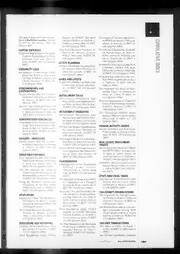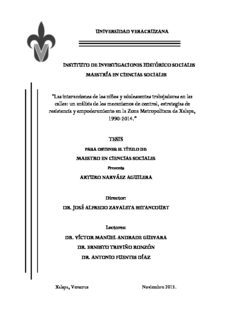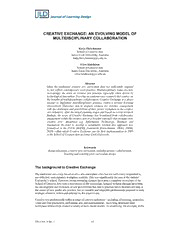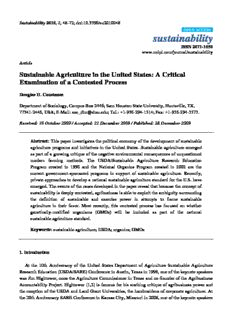
Sustainable Agriculture in the United States PDF
Preview Sustainable Agriculture in the United States
Sustainability 2010, 2, 48-72; doi:10.3390/su2010048 OPEN ACCESS sustainability ISSN 2071-1050 www.mdpi.com/journal/sustainability Article Sustainable Agriculture in the United States: A Critical Examination of a Contested Process Douglas H. Constance Department of Sociology, Campus Box 2446; Sam Houston State University, Huntsville, TX, 77341-2446, USA; E-Mail: soc_dhc@shsu.edu; Tel.: +1-936-294-1514; Fax: +1-936-294-3573. Received: 30 October 2009 / Accepted: 22 December 2009 / Published: 28 December 2009 Abstract: This paper investigates the political economy of the development of sustainable agriculture programs and initiatives in the United States. Sustainable agriculture emerged as part of a growing critique of the negative environmental consequences of unquestioned modern farming methods. The USDA/Sustainable Agriculture Research Education Program created in 1990 and the National Organics Program created in 2002 are the current government-sponsored programs in support of sustainable agriculture. Recently, private approaches to develop a national sustainable agriculture standard for the U.S. have emerged. The events of the cases developed in the paper reveal that because the concept of sustainability is deeply contested, agribusiness is able to exploit the ambiguity surrounding the definition of sustainable and exercise power in attempts to frame sustainable agriculture in their favor. Most recently, this contested process has focused on whether genetically-modified organisms (GMOs) will be included as part of the national sustainable agriculture standard. Keywords: sustainable agriculture; USDA; organics; GMOs 1. Introduction At the 10th Anniversary of the United States Department of Agriculture Sustainable Agriculture Research Education (USDA/SARE) Conference in Austin, Texas in 1998, one of the keynote speakers was Jim Hightower, once the Agriculture Commissioner in Texas and co-founder of the Agribusiness Accountability Project. Hightower [1,2] is famous for his scathing critique of agribusiness power and the cooption of the USDA and Land Grant Universities, the handmaidens of corporate agriculture. At the 20th Anniversary SARE Conference in Kansas City, Missouri in 2008, one of the keynote speakers Sustainability 2010, 2 49 was Undersecretary of Agriculture Dr. Gale Buchanan, a weed scientist. In tone with the times, his talk centered on biofuels as the new focus of sustainability. A lot had changed in those 10 years. One of the recurring themes at the 20th Anniversary Conference was that it was time to diffuse SARE‘s numerous accomplishments to the ―whole of American agriculture.‖ Commenting on this theme, a longtime advocate of sustainable agriculture, John Ikerd [3,4], remarked to me in the hall at the conference, ―The camel has got his nose in the tent.‖ At about the same time, we began hearing about two initiatives to create national sustainable standards and metrics for agri-products: the Leonardo Academy/American National Standards Institute (ANSI) project and the Keystone Center initiative—Field to Market: The Alliance for Sustainable Agricultural Outcomes. After a closer look at these two projects, it appears that the proverbial camel has more than his nose in the tent. The interest in sustainability issues increased after the term ―sustainable development‖ was coined in the 1987 report ―Our Common Future‖ published by the United Nations World Commission on Environment and Development [5]. Corporations, governments, and organizations of all sorts are going green, and the word sustainable is a key component of the rhetoric. Both nationally and internationally, private and public mechanisms to certify forms of sustainable agriculture are proliferating [6-9]. This paper investigates the development and creation of sustainable agriculture programs in the United States. The contested creation and development of sustainable agriculture programs such as United States Department of Agriculture Sustainable Agriculture Research Education program (USDA/SARE), the United States Department of Agriculture National Organics Program (USDA/NOP), the Leonardo Academy/ANSI project and the Keystone Center initiative provide fertile research grounds for investigating the political economy of alternative agriculture in general, and sustainable agriculture in particular. The cases of sustainable agriculture initiatives developed in this paper reveal that because the concept of sustainability is debated and contested, agribusiness interests are able to exploit these ambuiguties and exercise power to attempt to frame the definition of sustainable agriculture in their favor. The paper is divided into two content parts. The first part begins with an overview of the history of the USDA/SARE program to provide a context for the ecological critique of conventional agriculture and the resulting national-level legislation. This section includes a short description of the Southern SARE program to illustrate how the term ―sustainable‖ is operationalized at the regional level. The first part ends with an overview of the National Organic Program as a form of sustainable agriculture underpinned by a nationally-managed certification and labeling system. In both SARE and the NOP, the advocates of conventional agriculture challenged the definition of sustainability. The second part of the paper documents the Leonardo Academy/ANSI and Keystone Center initiatives designed to create sustainability metrics and a common national standard. The Leonardo Academy/ANSI project is being challenged by conventional agricultural interests and the USDA as being too narrowly focused on organic agriculture, as well as excluding significant representatives in the agrifood industries from participating in the process. The Keystone Center project is an industry-based initiative to expand the definition of sustainable to include ―all-available technologies.‖ The discussion and analysis section employs an agrifood governance power framework [10] to interpret the data presented in the paper. The conclusions discuss the implications of the contested definition of sustainable agriculture in the U.S. for agricultural sustainability in the world. Sustainability 2010, 2 50 2. The Development and Crisis of Modern Agriculture For much of history, traditional agriculture was characterized by animal traction and diversified farming operations that included crop and livestock components in a symbiotic and sustainable relationship. The agricultural revolutions and rapid adoption of modern farming broke this symbiotic relationship and replaced holistic systems with reductionist components. This process culminates today wherein biotechnology replaces nature as the focus of agricultural innovations [11]. The creation of modern farming in the U.S. dates to the mid-1800s. The USDA (1862), Land Grant Universities (LGUs; 1862/1890), Agricultural Experiment Stations (1887), and Cooperative Extension Service (1914) created a system whereby the agricultural innovations developed through research at the Experiment Stations were taught to the agriculture students at the LGUs and diffused to the farmers through the Extension Service. The USDA coordinated this process of research, teaching, and extension at the national level. The research conducted at the Experiment Stations followed a narrow, reductionist approach that assumed that farming systems could be studied as component parts. Extension agents encouraged innovative farmers to adopt the new technologies via a top-down technology delivery system. Reductionist science based on disciplinary research supported the development of specialization and monoculture at the farm level. Diversified farms were steadily replaced by specialized animal and row crop operations that concentrated on just a few agricultural commodities. At the same time, farm size increased as farm numbers decreased [11,12]. The Dust Bowl in the 1930s illustrated the negative environmental effects of plow-based modern agriculture. The Soil Conservation Service was the first government program to address these externalities. Silent Spring [13] exposed the complex web of environmental impacts linked to chemical-intensive agriculture and challenged the dominant belief that pesticides were harmless to the environment. Mounting evidence of pesticide resistance, bionic bugs, banned pesticides, farmworker poisoning, ground and surface water contamination, dead zones in the Gulf of Mexico, and the farm/debt crisis of the 1980s called attention to the negative externalities of modern agriculture [11,12]. 3. The Emergence of Sustainable Agriculture The United States Environmental Protection Agency (EPA) was created in response to citizens‘ demands to be protected from air and water pollution. The EPA policies included stricter regulations regarding agricultural chemical use. Several reports published in the 1980s documented the negative environmental and social impacts of modern agriculture and suggested increased support for alternative and/or organic agriculture [14-16]. The USDA Report and Recommendations on Organic Farming [14] provided scientific evidence of yield, net returns, and established principles of organic agriculture. This report was rejected by the incoming Reagan Administration, which also abolished the Organic Resources Coordinator position in USDA. The combination of these reports provided evidence in support of the need to develop USDA programs in sustainable agriculture research and education that made agriculture safer for humans and the environment and more productive for future generations. Critics warned that organic agriculture was not profitable and that it could not feed the world‘s growing population. To avoid some of these formidable critics, advocates of organic Sustainability 2010, 2 51 agriculture began supporting the term ―sustainable agriculture‖ as the proposed alternative to the dominant form of chemical-intensive agriculture. This strategy was successful [11]. 4. The First Legislation: LISA (Low Input Sustainable Agriculture) Due to extensive lobbying by advocates of alternative agriculture, the 1985 Food Security Act included provisions to support the development of sustainable agriculture. In 1988 the Low-Input Sustainable Agriculture Program (USDA/LISA) was created. The goal of the LISA competitive grants program was to develop and promote widespread adoption of more sustainable agricultural systems that would meet the food and fiber needs of the present while enhancing the ability of future generations to meet their needs and promoting the quality of life for rural people and all of society. An innovative provision of LISA was that farmers must be heavily involved in the program [11]. The organizational structure of LISA was created to accommodate regional practices and research needs. The structure included a national director, four regional coordinators, and in each region an Administrative Council (AC) to set program goals and oversee grants programs and a Technical Review Committee (TRC) to review the grant proposals for scientific merit. The AC was to consist of a broad mix of farmers, LGU scientists, USDA/government agency representatives, agribusiness representatives, and non-governmental organization (NGO) representatives [11,17]. Congress expected LISA to approach agricultural research from a non-conventional perspective and not replicate the existing USDA programs. LISA was designed to be a science-based grass-roots problem-solving program with major involvement of farmers and NGOs, as well as LGUs, in the management of the program. It was to be a significant departure from the standard or ―business as usual‖ single-discipline, reductionist studies focusing on a small component of the overall farming system. LISA was to support the work of interdisciplinary teams in developing and adopting farming methods and systems that are economically profitable, environmentally sound, and socially acceptable [11]. These three components are referred to as the three legs of the sustainable agriculture stool. 5. Resistance to LISA and Sustainable Agriculture Sustainable agriculture in general and LISA in particular quickly attracted criticism from conventional agriculture. Although Congress authorized LISA in 1985, the USDA did not fund it until 1988, and only when Congress demanded it. The agrichemical companies argued that low-input meant low yield, low income, mass starvation, and the destruction of agricultural industries. The Fertilizer Institute criticized LISA for advocating one farming system over another with no facts to back up the support. The chemical industry mounted a campaign to ridicule and discredit LISA with a barrage of anti-LISA articles and editorials in the farm press. The LGU system saw LISA as critical of its long-standing support for conventional agriculture. In some cases, LGU administrators did not distribute the LISA call for proposals to their researchers. Often the LGUs criticized LISA and sustainable agriculture based on inappropriate comparisons of fields with no agronomic treatments with fields with chemical treatments. There were also LGU efforts to inhibit NGO representation on regional ACs because the NGOs were often critical of conventional agriculture [17,18]. Sustainability 2010, 2 52 6. The Tension between the “Reductionist” and “Holistic” Research Approaches From the beginning of LISA there was a structural tension between the TRC and the AC regarding the kind of grants that were funded. The TRC is made up of LGU disciplinary scientists trained in reductionist science dealing with narrow agricultural components. The AC has broader representation including sustainable farmers and NGO representatives, but is dependent on TRC reviews biased to reductionist science. Additionally, the AC is mandated by Congress to be holistic and not ―business as usual.‖ The philosophical tension between the AC and the TRC also existed within the AC. While the LGU and USDA members of the AC tended to be more supportive of component research, the sustainable farmers and NGO members often pushed for whole farm approaches to sustainable agriculture. The solution was to fund a mixture of component research and whole farm/integrated systems research [17,18]. 7. From LISA to SARE Although Congress lauded LISA‘s innovative work and increased the funding the following year, to deflect criticisms from the chemical industries regarding low-inputs, the FACT Act of 1990 (Food, Agricultural, Conservation, and Trade Act of 1990) changed the name of the program from LISA to SARE, the USDA Sustainable Agriculture Research and Education Program. Sustainable agriculture was defined as an integrated system of plant and animal production practices having site-specific application that will over the long term: (1) satisfy human food and fiber needs; (2) enhance environmental quality and the natural resources and on-farm resources and integrate, where appropriate, natural biological cycles and controls; (3) sustain the economic viability of farm operations; and (4) enhance the quality of life for farmers and society as whole [17,18]. As opposed to the top down technology delivery system associated with conventional agriculture and the traditional Extension Service, SARE is built on a participatory research model that values producers‘ knowledge. SARE strives to view farming from a whole-systems approach as compared to the reductionist view of traditional agricultural disciplines. SARE strongly encourages multi-disciplinary and multi-institution research that generates research to enhance environmental quality, economic profitability, and social quality of life [17]. In the same year, the EPA created the ACE (Agriculture in Concert with the Environment) Program. From 1991 through 2001 SARE and ACE funded projects were jointly administered through SARE. SARE budget monies are divided into two competitive grants programs. The Research and Education Program is dedicated to the development of sustainable agriculture innovations/practices. The Professional Development Program is dedicated to ―train the trainer‖ projects with the goal to diffuse the sustainable agriculture innovations/practices from farmers to agricultural educators [18]. A total of more than 3000 projects have been funded since 1988 [19]. The budget has increased from the original level of $3.9M in 1988 to almost $19M in 2008, but is still less than one percent of the total research budget in USDA of about $2.3B. While there are officially three legs of the sustainability stool, most of SARE‘s projects have addressed environmental quality [19,20]. SARE‘s focus on environmental issues to the neglect of social and economic equity issues keep it in safer political territory. For some, SARE is only Sustainability 2010, 2 53 mildly-reformist, too influenced by conventional agricultural through the USDA and the LGUs to be a driver of social change towards substantive forms of sustainable agriculture [21]. 8. The SARE System of Sustainable Agriculture: The Example of the Southern SARE The SARE regional structure allows variation regarding program priorities and types of proposals funded; in other words, ―sustainable agriculture‖ can be operationalized differently across the regions. While the SARE official definition of sustainable agriculture does not preclude any technologies, because of regional autonomy, in some cases there is a preference for smaller-scale, organics, local/regional food systems, as opposed to ―band-aids‖ to moderate the externalities of conventional agriculture. The Southern Region SARE is made up of 13 states and is unique due to its dual system of 1862 and 1890 LGU participation [22]. As in the other regions, the TRC is selected and organized by the Southern SARE regional coordinator. As noted above, the TRC consists of disciplinary scientists, mostly based at the LGUs, whose role is to evaluate the proposals based on scientific merit. Sometimes, a proposal ranked scientifically sound by the TRC is not funded because the AC determines it does not meet the ―sustainable‖ criteria. The Research and Education Grants are the center piece of the SARE Program. Each year the Call for Proposals is reviewed and adjusted based on the priority areas identified by the AC. The current priority areas in the Southern Region SARE are: (1) environmentally sound practices/agricultural ecosystems, (2) minority/limited resource farmers, (3) marketing/economic development, (4) organic farming systems, (5) policy/program evaluation/quality of life, and (6) women in sustainable agriculture [23]. The ―women in sustainable agriculture‖ and ―minority/limited resource farmers‖ priority areas are examples of variation in regional SARE programs. In recent years, the Southern SARE AC decided to delete the component research priority area that focused on Best Management Practices (BMPs) designed to moderate negative environmental externalities (―band-aids‖). At the same time it enhanced the systems priority area that incorporates environmental, economic and social dimensions at the pre- and post-production stages [19]. These actions are notable examples of the flexibility allowed by the regional structure of the program. 9. The National Organics Program In the U.S., modern organic agriculture began in California in the 1960s as part of the counter- culture movement that rejected industrial values [24,25]. Consumer concerns related to pesticide contamination and other philosophical issues drove rising demand. In 1973 the first third-party certifying organization, California Certified Organic Farmers, was created to increase consumer confidence and limit fraud. The California Organic Foods Act of 1990 established a legal definition of organics, including an acceptable materials list and a ―certified organic‖ label based on third-party certifications schemes. The California system became the model for other states‘ organic certification regulations and the national certified organic label [25,26]. The combination of increasing demand and the certified organic label prompted agribusiness firms to enter the market to capture the price premiums, producing a ―conventionalization‖ of Sustainability 2010, 2 54 organics [25,27,28]. Because the certified organic standards in California emphasized the regulation of inputs over processes (an acceptable materials list), agribusiness firms employed input substitution practices that met the organic standards but otherwise avoided the more costly agronomic practices associated with organic production. At the same time, the costs associated with certification created entry barriers that were more easily overcome by more capitalized firms. Researchers predicted that the adoption of the National Organic Program (NOP) standards would have a similar effect on the whole country as many firms were waiting for a system of national standards before moving into the organic market [26,27,29-31]. The result would be an erosion of ―deep organic‖ practices in favor of less sustainable ―organic lite‖ approaches [32]. As conventionalization proceeds in organics, sustainability recedes. Growing demand and social movement activity resulted in the passage of the Organic Foods Production Act in 1990, which included a mandate to establish the National Organic Standards Board under USDA to develop national regulations to govern the production and handling of certified organic foods. The regulations recommended to USDA in 1994 were generally ignored in the drafting of the NOP Proposed Rule released in 1997. The USDA version focused on allowable inputs rather than agro-ecological processes or socio-economic dimensions of sustainable agriculture [26,27,31-33]. Not only did the Proposed Rule ignore the accepted organic practices recommended by NOSB, but it included the Big 3: genetically modified organisms (GMOs), biosolids, and irradiation. After the public outrage over the Big 3 during the comment period, the USDA withdrew them from the Final Rule that became effective in October 2002. The NOP Final Rule purposefully framed ―certified organic‖ as a market label based on consumer preference with no claims to health benefits or environmental superiority included in the objective meaning of the label [35]. USDA data provides some support for the predicted effect of the NOP on agribusiness entry. The U.S. had under a million acres of organic cropland when Congress passed the Organic Foods Production Act in 1990. By 2002, when the certified label was adopted, certified organic farmland had doubled, and then doubled again by 2005. The organic livestock sector grew even faster [36]. Although the number of organic operations did continue to grow in the 2002–2005 period, the rate of increase was lower than the previous two periods. This lowered rate of adoption was partially due to the market-based focus of the NOP which did not provide sufficient incentives and subsidies to ameliorate the perceived risks of organic conversion [37]. While over the past 20 years U.S. organic production has increased significantly, consumer demand has increased at an even faster pace [38]. This gap between domestic production and consumption is mostly due to a lack of government support for conversion to organics, including support payments during the conversion period and institutional research. Unlike in Europe where government-sponsored organic conversion and production supports began in the late 1980s based on explicit recognition of the environmental and surplus reduction benefits of organics, there was no official USDA program that explicitly encouraged conversion [37]. As a result, organic food and food supplies that meet the USDA regulations are increasingly being imported to meet the growing demand in the U.S. In an attempt close the gap between domestic production and consumption, the Food, Conservation, and Energy Act of 2008 (2008 Farm Act) included several new provisions to increase organic adoption rates [38]. Organic food is the fastest growing segments of food sales. In recent years the organic food sector has experienced double-digit growth while conventional foods have experienced a more moderate 2 Sustainability 2010, 2 55 to 3 percent growth rate [36,39,40]. Once considered a niche-market, organic products are now sold in the mainstream supermarkets as the majority of U.S. consumers buy some organic products [41]. As supermarkets have increased their market share, agrifood TNCs have bought up numerous organic operations and/or developed their own product lines to supply the supermarkets [42]. Research from the UK reports that the conventionalization and consolidation of organics have increased the cost-price squeeze and shrunk premiums for producers [43]. As a result, the trend in organics is towards diminished sustainability, what Guthman [32] refers to as ―organic lite.‖ 10. The Leonardo Academy/American National Standards Institution Initiative On April 13, 2007 the Leonardo Academy, acting as an agent of American National Standards Institution (ANSI), posted the draft of ―Sustainable Agriculture Practice Standard for Food, Fiber, and Biofuel Crop Producers and Agricultural Product Handlers and Processors‖ (LEO SCS-001-200x) in the ANSI Standards Action [44]. The Leonardo Academy had been approached in early 2007 by the California-based firm, Scientific Certification Systems, to propose a draft standard for trial use (DSTU) on sustainable agriculture for adoption by ANSI [45]. This DTSU was to be used as a reference document in the development of the final document. Leonardo Academy, an ANSI-accredited standards development organization, is providing the process administration to develop a national sustainable agriculture standard through ANSI. ANSI is an established and internationally recognized standards accreditation organization. According to the Leonardo Academy, ―A large and growing segment of consumers in the U.S. are actively seeking to support companies whose agricultural products are grown and handled sustainably; however, there is little agreement about what sustainability means‖ [46]. As part of the announcement, the Leonardo Academy [47] invited ―all stakeholders‖ to help shape the U.S. standard through the ANSI process. In October 2007 the Leonardo Academy hosted the ―Information/Kick-Off‖ meeting where a review of the DTSU was presented by the company, Scientific Certification Systems. The DTSU was patterned after the successful ANSI-developed VeriFlora sustainable standard for cut flowers and potted plants. The stated purpose of the draft standard is to [48]: Establish a comprehensive framework and common set of environmental, social, and quality requirements by which to demonstrate that an agricultural product has been produced and handled in a sustainable manner, from soil preparation and seed planting through production, harvest, post-harvest handling, and distribution for sale. The standard is intended for food, fiber, floral, and fuel crops, but not livestock, dairy or wild crops. The DTSU contains three dimensions of sustainability: environmental sustainability, social/economic responsibility, and product integrity. Within these dimensions, the scope of the project is designed to establish practices that (1) build a healthy agro-ecosystem, (2) preferentially employ biological, mechanical, and cultural methods of pest and disease control, (3) phase out the use of agrochemicals that pose acute or chronic health risks, moving toward organic practices, (4) yield practices with high nutritional value and meet national organic standards for purity in terms of pesticide residues/contaminants, (5) protect the surrounding ecology, (6) minimize packaging, (7) optimize energy efficiency in growing, transport, and handling, (8) maximize carbon storage while maintaining Sustainability 2010, 2 56 yield, (9) establish a safe, equitable workplace, and establish productive engagement with the surrounding community. The overall goal of the project is to provide a uniform standard and assessment matrix for evaluating sustainability performance across several dimensions [48]. In early 2008 the Biotechnology Industry Association and major commodity trade associations [49] expressed concerns about the ANSI standard that they felt would exclude biotech crops and high-production agriculture [46]. In a letter to ANSI, they stated that the Leonardo Academy did not follow the ANSI process and that this ―may have already led to irremediable defects‖ that will negate an acceptable outcome [50]. The letter criticizes the DTSU on several counts; the following two apply most directly: (1) Equating organic practices with best management practices, a conclusion that would be soundly rejected by many in the scientific community (2) Rejecting outright the use of biotechnology, perpetuating scientifically unsound and overly precautionary approaches that have been rejected by many governments, including our own, and which have provoked significant trade concerns. The letter also asserted that the Leonardo Academy did not notify ―materially affected stakeholders‖ prior to the adoption of the draft standard and has not done so adequately since its announcement. They criticized the standard for being too closely tied to organic agriculture and ignoring the definition of sustainable agriculture set forth in the 1990 Farm Bill. Finally, they expressed concern that because the Leonardo Academy had little knowledge and experience in sustainable agriculture and the process did not include a broad enough range of stakeholders, especially government experts, the final outcome would not be credible [50]. Conventional agriculture viewed the initiative as ―a stalking horse‘ for the organic industry [45]. On February 25, 2008 the Leonardo Academy replied to the ―procedural complaint‖ detailed in the above letter [51]. President of the Academy, Mr. Michael Arny stated that the Leonardo Academy had followed ANSI protocols and that the DTSU is a ―placeholder document;‖ everything in the standard is ―on the table‖ to be addressed by the Standards Committee in preparation of the final approved standard. Furthermore, he detailed the timeline and instances that the standard had been advertised, participation solicited, presentations made, and meetings held. Finally, he noted that contrary to the points made by the Biotechnology Industry Association and associates, the Leonardo Academy had a long history of experience in sustainability issues and standards development and that the Standards Committee is open to all interested parties, including government officials, academic experts, industry stakeholders, and environmental and labor NGOs. The Leonardo Academy requested for the industry group to review the responses and hoped that the complaints could be handled informally, if not, a formal appeal process is included in the standards development protocol [51]. At the February 28, 2008 first stakeholder dialogue meeting to explain the protocol for participating in the standards development process, three panelists from mainstream agriculture made presentations on agricultural biotechnology, integrated pest management, and sustainable biofuels [47]. On May 20, 2008 Charles F. Conner, Deputy Secretary of Agriculture, sent a letter to Mr. Arny expressing the USDA‘s ―serious concerns‖ regarding the process and nominated three USDA employees to serve as observers to the Standards Committee in order to allow for ―the development of an appropriate and meaningful standard through a robust, inclusive, and transparent process‖ [52]. The three USDA Sustainability 2010, 2 57 representatives were: R. Charles Martin, Deputy Associate Administrator, Agricultural Marketing Service; Michael Schectman, Biotechnology Coordinator for the Office of the Secretary; and Kirsten Jaglo, Office of Scientific and Technical Affairs, Foreign Agricultural Service. Mr. Conner noted that a separate letter would be forthcoming to describe the serious concerns [52]. The letter of June 6, 2008 from Deputy Secretary Conner to Mr. Arny detailed the serious concerns. The main issue is what USDA perceived to be a very narrow interpretation of sustainable agriculture. He notes that the USDA definition in the 1990 Farm Bill is purposefully broad to recognize that sustainability can be achieved through various methods and does not exclude particular technologies [53]. He argued that the standards developed for U.S. agriculture need to be consistent with U.S. laws and policies. He criticized the Leonardo Academy for adopting a narrow definition of sustainable agriculture, a subset of the certified organic practices as defined in the NOP, which would not allow producers to use tools such as ―modern biotechnology, synthetics fertilizers, or other technologies‖ that ―are well within sustainable agriculture as defined by the law [53]. Deputy Secretary Conner stated that there is no sound evidence that these technologies are inherently unsustainable and that prohibiting the use of modern technologies at a time when global food prices are at record levels ―can hardly by considered sustainable‖ [53]. The other major concern expressed in the letter was the issue of inclusiveness. Deputy Secretary Conner maintained that stakeholders representing a major portion of U.S. agriculture (1.4 B acres of crop, forest, and grazing lands) are not included in the process, nor are they voting members of pertinent committees. Because of these flaws, Deputy Secretary Conner concluded that the process is biased and the Draft did not provide an adequate basis to move forward toward a consensus standard [53]. In his June 24, 2008 response letter to Deputy Secretary Conner, Mr. Arny disagreed with the USDA positions regarding inclusiveness and definitions of sustainability and encouraged the USDA and associated stakeholders to continue to participate in the process. He again stated that the DTSU was to be used as a working document and that the focus on organics in the draft is amendable by the Standards Committee. Similarly, while the prohibition of genetically-engineered planting materials ―reflects a precautionary approach that permeates many other sustainability labeling standards around the world,‖ this criteria is also amendable by the Standards Committee [54]. Mr. Arny also explained that the Leonardo Academy was not a material participant in the process, but only a neutral facilitator whose role is guarantor of an open, transparent process inclusive of all stakeholders. ANSI protocols state that government representatives are welcome to participate as equal members, but are not allowed to ―dominate‖ the process. Mr. Arny provided a timeline of past and future activities and noted that the three USDA nominees to serve as observers to the Standards Committee are welcome, but as non-participating observers would not be involved in committee meetings. He encouraged the USDA to nominate one or more representatives to serve on the Standards Committee or supporting subcommittees. Mr. Arny concluded that it was inappropriate for the USDA to call for the draft to be abandoned; rather, it should follow federal government policy to support and participate in development of voluntary, consensual standards [54]. On September 11, 2008, Lloyd C. Day, Administrator for the USDA/Agricultural Marketing Service (USDA/AMS), sent a letter to Ms. Anne Caldas of ANSI formally requesting that the Leonardo Academy‘s accreditation as a ANSI standards certifying organization be revoked [55]. Mr. Day presented nine appeal issues based mostly on previous communication between USDA and
Description:The list of books you might like

Can’t Hurt Me: Master Your Mind and Defy the Odds

As Good as Dead

Better Than the Movies

Rich Dad Poor Dad
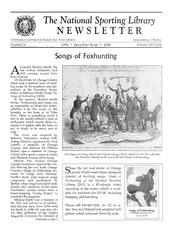
NSLM Newsletter - Winter 2006

ES 4755: GENERAL REQUIREMENTS FOR SAFETY OF LAMP CONTROL GEAR

Greek Government Gazette: Part 2, 1993 no. 611

Développement durable : Quelles politiques ?

Identification of neonatal near miss by systematic screening for metabolic acidosis at birth.
![Die Gattung Amplyptems Hübner, [1819] (Lepidoptera, Sphingidae) book image](https://cdn.pdfdrive.to/media/content/thumbnails/7ea74465-ee9d-452f-81c7-5c1f9918eb0a.webp)
Die Gattung Amplyptems Hübner, [1819] (Lepidoptera, Sphingidae)

Greek Government Gazette: Part 3, 2006 no. 150

Greek Government Gazette: Part 4, 2006 no. 599
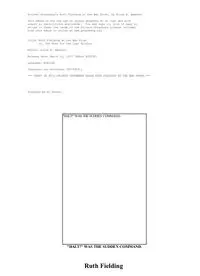
Ruth Fielding at the War Front by Alice B Emerson
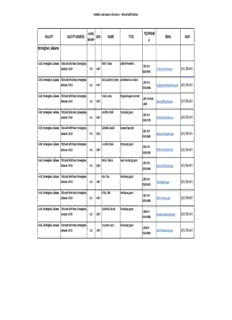
Birmingham, Alabama - Rehabilitation and Prosthetic

The Young Alaskans by Emerson Hough

The Timber Pirate by Charles Christopher Jenkins

Technische Mechanik. Statik
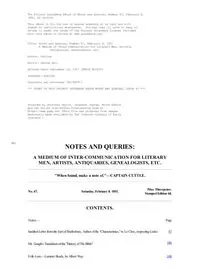
Notes And Queries Issue 67

